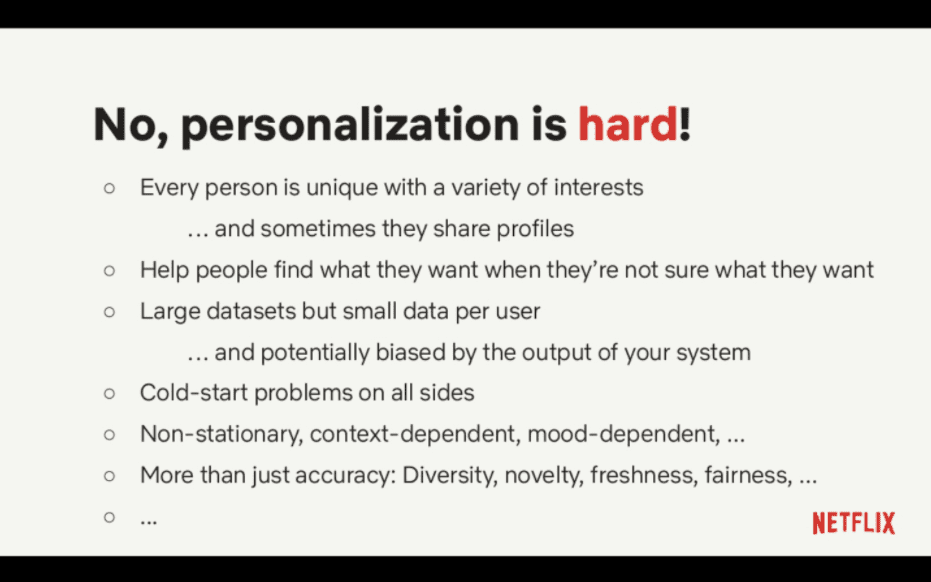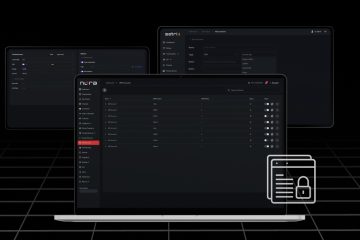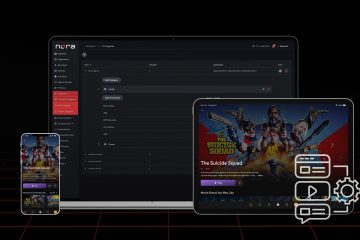Table of Contents
- Video Content Personalization
- Prominent Input Variables for Creating Personalized Video
- In Conclusion
In the hit romantic comedy What Women Want, Nick Marshall, an ad executive played by Mel Gibson, acquires a unique ability to ‘hear’ what women are thinking, which he uses to make things work in his favor.

Dial forward 20 years. Owners of OTT services worldwide are looking for the Nick Marshalls in their teams, who can understand what users want to drive subscriptions and engagements to recoup the billions invested in creating vast content catalogs across genres. Until they find their own Nick Marshalls, the focus is on User Personalization; an intelligent mix of Data + Technology + Content to drive personalized user experiences.
Video Content Personalization
“Personalization is the process to find the “perfect” suggestion to a user in a specific UI/UX from a vast pool of contents/options,” stated Juan Carlos, founder of Vilynx, which has the AI-enabled video tech to learn the videos and match it with user intent.
The Netflix model of video personalization
Users and experts alike consider Netflix as one of the best in the business for personalizing user experiences. Through his SlideShare account, Justin Basilico, Engineering Director at Netflix, has been providing a peek into the engineering excellence that has gone into driving the crystal ball-like experience that one gets at Netflix. In spite of achieving great reviews, he acknowledges that personalization is still an interesting challenge.

Their heuristics systems learn from the event triggers to continuously improve factors that impact the user experience. It algorithmically ranks the assets while deciding the order in which they get presented. It provides personalized options to the users in response to a search query. Even the thumbnails & trailers are rendered based on specific user personas.
What makes video content personalization complex is human nature, which, unlike machines, does not necessarily follow an easily discernible pattern and can exhibit contrarian responses to external stimuli. Under emotional situations, a set of users might prefer to watch romantic comedies, while another cohort might like to see action movies. Having the right mix of assets to service the diverse needs of the users, depending on their diverse preferences, is like offering an elaborate buffet for every single meal served in a day.
What gets captured in the OTT personalization process?
A wide variety of explicit and implicit data points get captured, which eventually helps the OTT platforms offer personalized experiences. Likes, ratings, watch later, shares, reviews, and downloads are the generally tracked explicit data points that reflect user preferences. Mapping content consumption patterns exhibited by look-alike cohorts, and using that data point and other input variables to predict what the user is most likely to watch, is an excellent example of the implicit data use case.
User privacy
Being respectful of user privacy is the key, as Field Garthwaite, founder of IRIS.TV, called out in his definition of content personalization. “Content personalization is the encompassing term that refers to the data engineering and machine learning processes that result in matching the catalog that a content owner has with each end-user based on a number of data points that the user has consented to be collected in order to improve their customer experience.”

Prominent Input Variables for Creating Personalized Video
Input variables processed to predict which video content is most likely to get user attention might vary across demographics, time of the day, events happening around them, platforms over which the content is consumed, connectivity, and most importantly, the user’s historical patterns as other look-alike user personas.
User personas and behavior
User personas are the comprehensive profile of the users that get built over time, based on first-party and 3rd party data points gathered with user opt-in workflows.
While user behavior is a component of user personas, there are dedicated platform providers out there that provide a real-time dashboard of user behaviors and resulting forward-looking indicators that OTT business owners can leverage to drive higher LTV from their audience.
Video metadata
While user personas, behavior, and intent trigger the opportunity to serve a video, the video metadata is leveraged to identify the appropriate asset that matches the opportunity. Video meta is the blueprint of what the video is all about, which would include the file format, SRT file, copyright, file size, a summary of the video, to name a few. While it is mostly developed manually, sophisticated video fingerprinting solutions are available to generate metadata automatically.
Artwork: key art, trailers, posters & thumbnails
OTT audiences have pushed movie makers, marketers, and platforms to raise the bar, which has led to significant changes in the way artworks are managed in the OTT era. From the traditional approach of anchoring all the promotions based on one Key Art, or a couple of versions of posters, and trailers, OTT platforms have moved into contextualizing the visual experiences to ensure that it aligns with the user’s frame of mind to drive successful engagement.
Craig Mazin, the creator of Chernobyl, had his team invest a considerable amount of time in narrowing down on the haunting poster of a cleanup worker in a gas mask that resonated well with the audience even though it did not have any known face – an excellent example of contextualization of artwork. Likewise, platforms like Netflix are famous for creating multiple versions of posters, thumbnails, and trailers that are surfaced based on user personas.
In Conclusion
The OTT industry is constantly seeking ways to keep audiences engaged, even while there is an influx of many new services being launched across markets that are fighting for eyeballs.
While significant investments have gone into video content creation, service providers have resorted to using a combination of point solutions and powerful platforms to drive a better outcome for the users. Asset IQ by IRIS.TV, emotional data-based decision framework by Vion Labs, ad personalization by SpearAd, and contextually relevant personalized commerce touchpoint offered by Charmboard, interactive video experiences enabled by VideoTap are among the noteworthy solutions powering the next phase of OTT video personalization across content and advertising verticals.
We’re Setplex.
At Setplex, we offer the best of both worlds to our clients, a full stack world-class proprietary technology for launching an OTT service with a video personalization function, further augmented by 3rd party solutions carefully curated and vetted to meet diverse personalization needs. Talk to us today to know more about how Setplex can help you launch your IPTV/OTT service.



1 Comment
Paul · October 18, 2022 at 1:37 pm
I love video personalization. It boosts user experience.